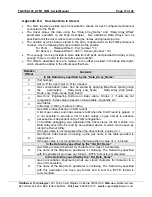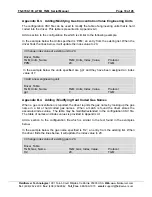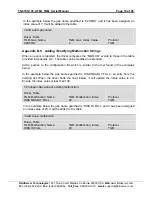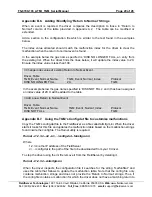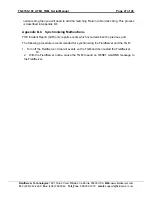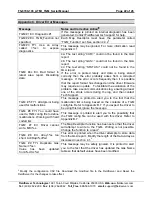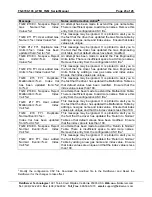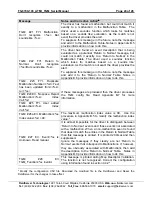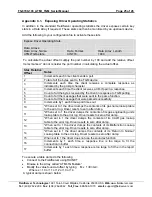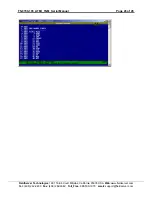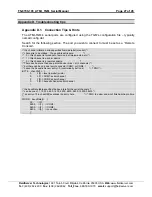
FS-8700-103_ATMI_TGM_Serial
Manual
Page
20
of
28
FieldServer Technologies
1991 Tarob Court Milpitas, California 95035 USA
Web
:www.fieldserver.com
Tel
: (408) 262-2299
Fax
: (408) 262-9042
Toll_Free
: 888-509-1970
Appendix B.6. Adding / Modifying ‘Return to Normal’ Strings
When an event is reported, the driver compares the description to those in “Return to
Normal” column of the table provided in Appendix A.2. The table can be modified or
extended.
Add a section to the configuration file which is similar to the text found in the examples
below.
The index value allocated should match the malfunction index for the driver to clear the
malfunction when the return to normal event is found.
In the example below the gas name specified is ‘DISK NO LONGER FULL, an entry from
the existing list. When the driver finds the lines below, it will update the index value to 20.
Ensure the index value is less than 100.
// Change index value of existing Return to Normal Event.
Driver_Table
TGM_Event_Normal_Name,
TGM_Event_Normal_Index,
Protocol
DISK NO LONGER FULL,
20,
TGM
In the example below the gas name specified is ‘DISK NOT FULL’ and it has been assigned
an index value of 20. It will be added to the table.
// Add a new Return to Normal Event
Driver_Table
TGM_Event_Normal_Name,
TGM_Event_Normal_Index,
Protocol
DISK NOT FULL,
20,
TGM
Appendix B.7. Using the TGM’s Config.dat file to customize malfunctions
Copy the TGM’s config.dat file to the FieldServer as a file called atmitgm.ini. When the driver
starts it looks for this file and updates the malfunction table based on the malfunction strings
found inside the config file. The Ruinet utility is required
Ruinet –i1.2.3.4 –u0 –lc:\…\config.dat –fatmitgm.ini
Where
1.2.3.4 is the IP address of the FieldServer
c:\….\config.dat is the path of the file to be downloaded from your C driver.
To stop the driver using the ini file remove it from the FieldServer by deleting it.
Ruinet –i1.2.3.4 –zatmitgm.ini
When the driver inspects the configuration file it searches for the string “malfunStat” and
uses the table that follows to update the malfunction table. Note that the config file only
contains malfunction strings and does not provide the ‘Return to Normal’ strings. Thus, if
the config file contains a malfunction for which the driver does not have a matching return to












